Understanding Diamond Depth and Table
How to choose the depth and table that will maximize your diamond's brilliance
How to choose the depth and table that will maximize your diamond's brilliance
Together, the depth and table size of a diamond significantly influence how light is reflected back to the viewer’s eye, thereby affecting its brilliance. Both table and depth play a significant role in a diamonds cut grade appearing in its grading report.
The table of a diamond refers to its flat, top facet which is clearly visible when viewed from above. The ideal table percentage varies by shape. For a round cut diamond, an excellent table range is 54 and 57 and for a princess cut a table range of 69 to 75 percent of the width of the diamond is recommended.
The diamond’s depth measures the distance from its top table to the culet at its base and is represented as a percentage. This percentage is determined by dividing the diamond’s height by its width, with a greater depth resulting in a higher depth percentage. Like table, the recommended depth percentages vary by shape. For a round diamond, an ideal depth percentage is between 59 and 62.6 percent and for a princess cut look for a diamond with a depth of 68 to 74 percent.
Are depth and table important in a diamond?
What is a diamond’s table?
What is the ideal table size for a diamond?
What is diamond’s depth?
What is a good depth for a diamond?
How to choose the right diamond
Bottom Line Recommendation:
The depth and table of a diamond have a huge impact on its appearance and value. There’s no “best” depth and table for every diamond — instead, the ideal depth and table depend on the cut you’re considering. For example, take a look at this diamond from James Allen. This is about as bad a diamond as you can get. Look at the depth and table. They are way outside the range of what is a decent round diamond. But if this were cushion cut, those numbers would be fantastic.
We’ve listed the best depth and table ranges for round cut diamonds, princess cuts and several other popular diamond shapes below, along with tips to help you get the best diamond within your budget.
When you’re comparing diamonds, whether for buying an engagement ring or other jewelry, it’s easy to get distracted by a diamond’s size, color and clarity.
These factors make up three of the 4 Cs of diamonds — in this case, color, clarity and carat. The fourth C is cut, a factor that’s every bit as important as a diamond’s size, color and clarity in determining its value. In Asia, it’s a custom to get the best cut diamond possible.
Why you should trust us
Take a look at this diamond from JA. If you just look at the color and clarity, the price seems amazing for this diamond. But if you dig into the numbers, you realize that the depth and table are way out of whack. This diamond would have virtually no brilliance in real life lighting scenarios. On the other hand, this diamond also from James Allen seems to be expensive in comparison to other diamonds with the same color and clarity. Yet if you dig deeper you realize that this diamond is exquisitely cut and will be a stunner.
Two of the most important factors in determining the quality of a diamond’s cut are its depth and table. Below, we’ve explained exactly what these are, as well as what you should look for when you’re comparing diamonds.
Even though this article is about depth and table, eye-cleanliness is an important part of picking out a diamond. In our opinion, a consumer’s goal should be to find the cheapest (in regards to clarity; other factors matter as well) “eye-clean” diamond you can find. We use “eye-clean” to describe diamonds that may have inclusions if you look at them with a magnifying glass (or microscope or loupe), but the typical person can’t see the inclusion with their naked eye.
We have recently developed Ringo, a patented artificial intelligence model, that can examine videos of diamonds and determine if they are eye-clean. Ringo will also filter for other parameters like making sure the diamond is well-cut, doesn’t have fluorescence issues and will match the style setting you choose.
A diamond’s table is the flat facet on its surface — the large, flat surface facet that you can see when you look at the diamond from above. As the largest facet on a diamond, the table plays a major role in determining how brilliant (sparkly) the diamond is.
Look at several diamonds side by side and you’ll notice that they usually have one major feature in common: a flat, table-like surface.
This part of the diamond is referred to as the table. On a modern round brilliant cut diamond, the table is one of 58 facets on the surface of the diamond. As the top facet, the table lets light into the diamond and refracts it towards the facets on the top and sides, creating its unique, sparkly appearance.

The size of the table is one of the most important factors in the appearance of any diamond. A large table not only lets light into the diamond, but it also disperses light onto the other facets of the diamond to create a beautiful sparkle.
Take a look at these two diamonds — one has a table of 55% and the other one has 59%.
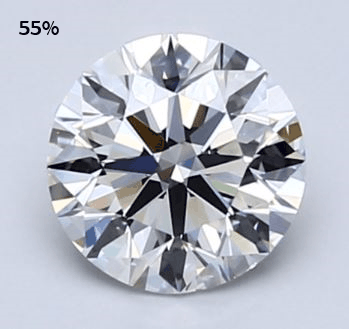
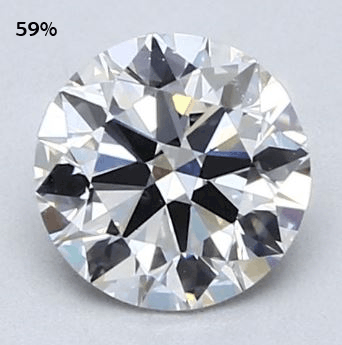
While it’s important for a diamond’s table to be large enough to allow light in, a bigger table isn’t necessarily better. A good table needs to be balanced — it needs to be large enough to let lots of light into the stone, but not so big that it doesn’t refract light onto the crown of the diamond.
Table percentage is calculated by measuring the width of the table as a percentage of the total width of the diamond. The wider the table is relative to the diamond’s total width, the larger the diamond’s table percentage.
Like other aspects of a diamond’s quality, the table of a diamond is graded from poor to excellent, depending on its quality. An excellent quality table percentage allows the optimal amount of light into a diamond, creating a beautiful sparkle. On the other hand, a diamond with a poor table may appear dull due to its poor light reflection capabilities.
Below, we’ve listed the ideal table percentage range for the most common diamond shapes. Because diamonds are more complicated than just a few numbers, these ranges are intended as guidelines only:
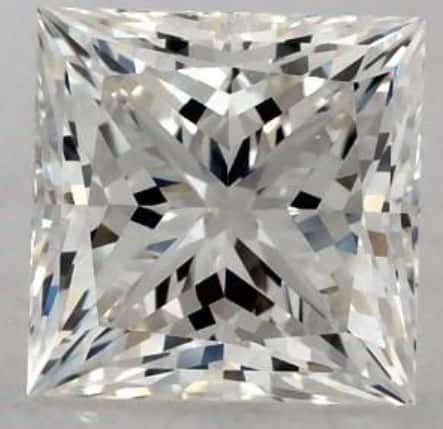
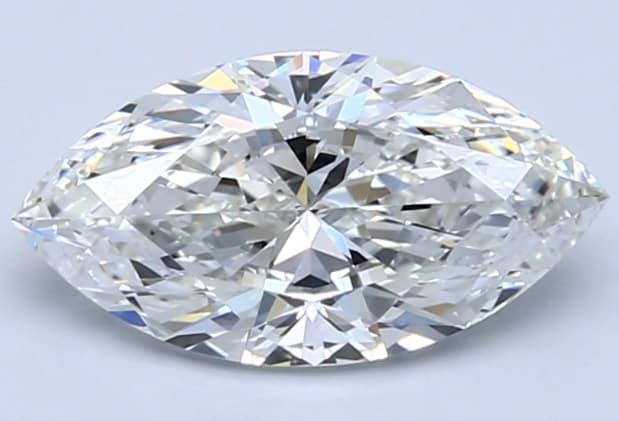
Outside these ranges, the table can negatively affect the look of a diamond. A table that’s overly wide can reduce the dispersion of light throughout the diamond, giving even a gorgeous stone a lack of fire.
In short, a bigger table doesn’t mean better looks. Search for the table size percentages recommended above and you’ll get the best balance of a classic appearance and plenty of brilliance and fire from your diamond.
The depth of a diamond refers to its measurement from top to bottom, from the table on the top of the diamond to the culet at its base. The depth of any diamond is expressed as a percentage.
Depth percentage is calculated by dividing the diamond’s total height by its total width. The deeper the diamond’s depth, the higher the diamond’s depth percentage.
Great diamonds are all about proportion. When a diamond has the right combination of depth and table percentages, it’s more capable of taking in and reflecting light. This results in a stronger, more beautiful sparkle and better visual balance.
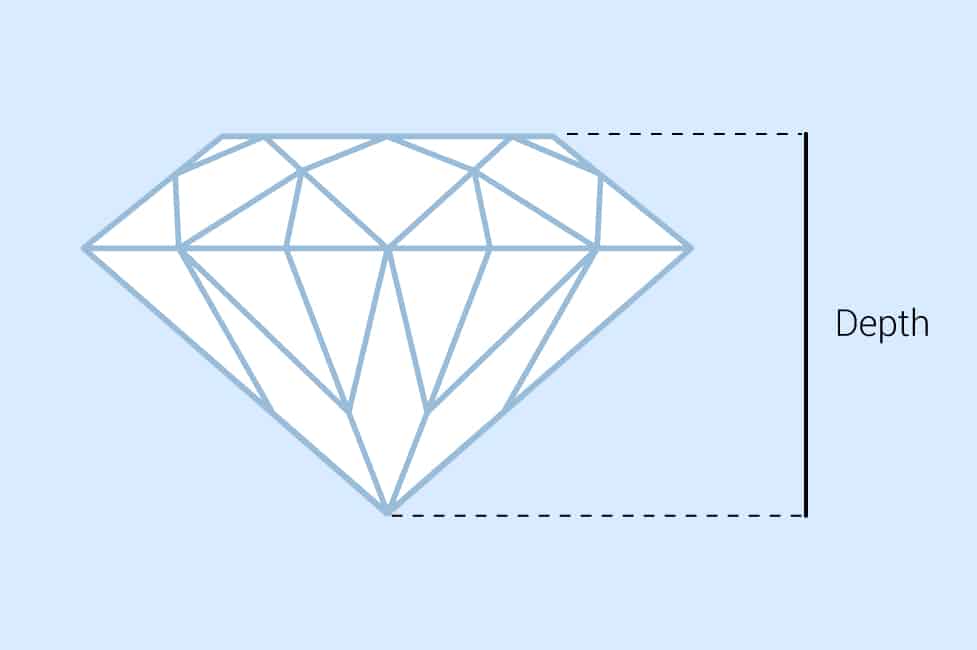
As well as the depth as a percentage, most grading reports also include the depth of a diamond in millimeters.
Like the table, a diamond’s depth has a huge impact on its appearance. A short diamond with a shallow depth will allow most light to pass through from top to bottom, reducing the sparkle and fire that’s visible when it’s exposed to light.
This can also happen when a diamond is too deep. Because of the different weight distribution, a diamond that’s too deep can look thinner and smaller than a shallower diamond of equal carat weight.
Just like with a diamond’s table, there’s no “best” depth for every type of diamond. Instead, the ideal depth range depends on the cut you choose. Also like table, each diamond’s depth is given a grade, which can range from poor to excellent.
Below, we’ve listed the ideal diamond depth ranges for all of the most common diamond shapes. Like with the ideal diamond table percentages we listed above, these ranges are intended as general guidelines only:
Because depth and table play a huge role in determining a diamond’s appearance, brilliance, fire and value, they’re two of the most important factors to keep in mind when you’re shopping for diamond jewelry.
| Diamond Shape | Ideal Table Percentage | Ideal Depth Percentage |
|---|---|---|
| Round Brilliant Cut | 54 to 57% | 59 to 62.6% |
| Princess Cut | 69 to 75% | 68 to 74% |
| Cushion Cut | < 68% | 61 to 68% |
| Emerald Cut | 60 to 68% | 61 to 68% |
| Asscher Cut | 60 to 68% | 61 to 68% |
| Oval Cut | 53 to 63% | < 68% |
| Pear Shape | 53 to 65% | < 68% |
| Radiant Cut | 61 to 69% | < 67% |
| Heart Shape | 56 to 62% | 56 to 62% |
| Marquise Cut | 53 to 63% | 58 to 62% |
Using the recommended depth and table percentages above, you can easily rule out diamonds that aren’t cut well, helping you avoid low-quality stones during your search.
It has been reported that some diamond cutters are trying to “cheat” the system of how depth is calculated by adding extra facets on the girdle. According to diamonds.net “The GIA calculates a brilliant-cut diamond’s depth by adding together the height of the crown, the average thickness of the girdle and the depth of the pavilion” these extra facets are lost in the calculation and “This creates the possibility that diamonds will get a lower depth percentage than they deserve, potentially inflating their cut grade.”
It’s important to remember that while ideal depth and table are important things to look for in a diamond, they’re not the only things that you should pay attention to. Pay attention to the three other Cs — diamond color, diamond clarity and carat weight — and you’ll find it easier to pick the right diamond.
Need help choosing the right diamond? Reach out to our experts and we’ll help you find the highest quality diamonds for your preferences and budget.
Before you buy a diamond, get personal buying advice from industry veterans. We'll help you get the best diamond for the money.
DISCLAIMER: We don't use your email for marketing. Period.
A diamonds’ price is determined primarily by the 4 Cs of the diamond. On the wholesale level, diamond prices are first based on a diamond shape and
Buying an engagement ring is often one of the first major purchases in a person's life. The process can be fraught with tension as there are so m
A wide range of 1 carat diamonds exist both in online markets and local diamond jewelry stores. Not only are there significant differences in beauty
Please enter your email address to receive your 25% off coupon code:
Here is your coupon code: GFDSF3GF